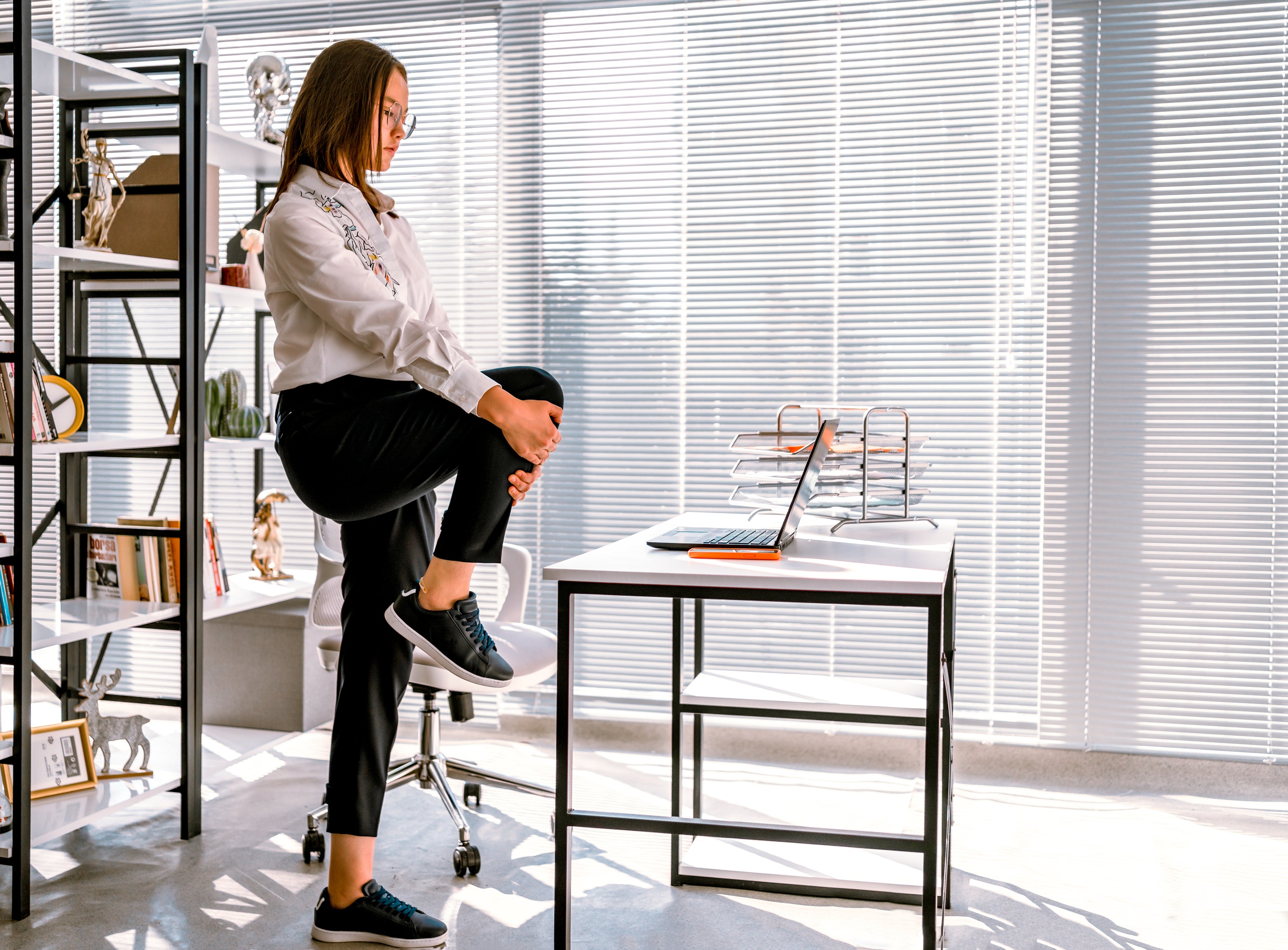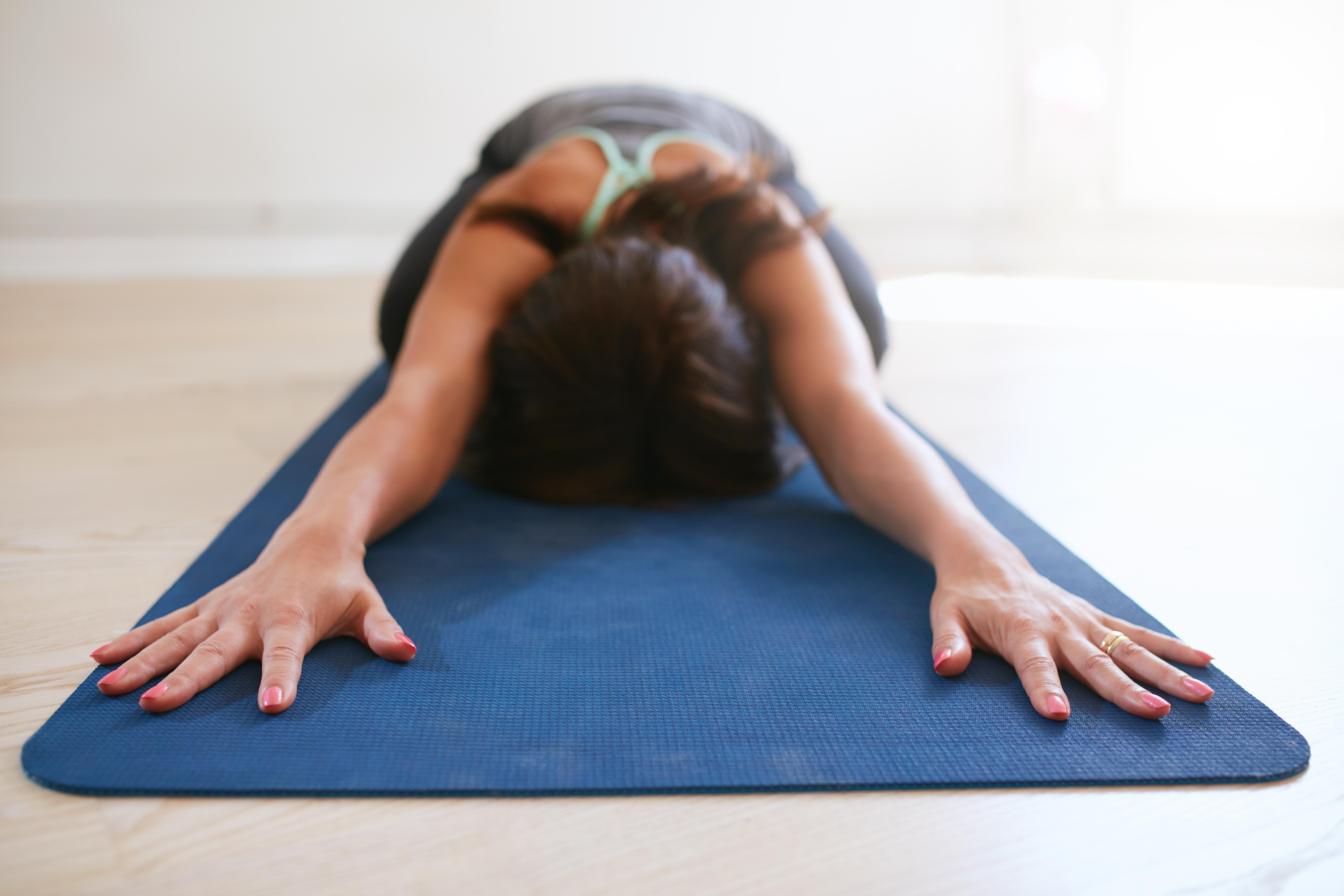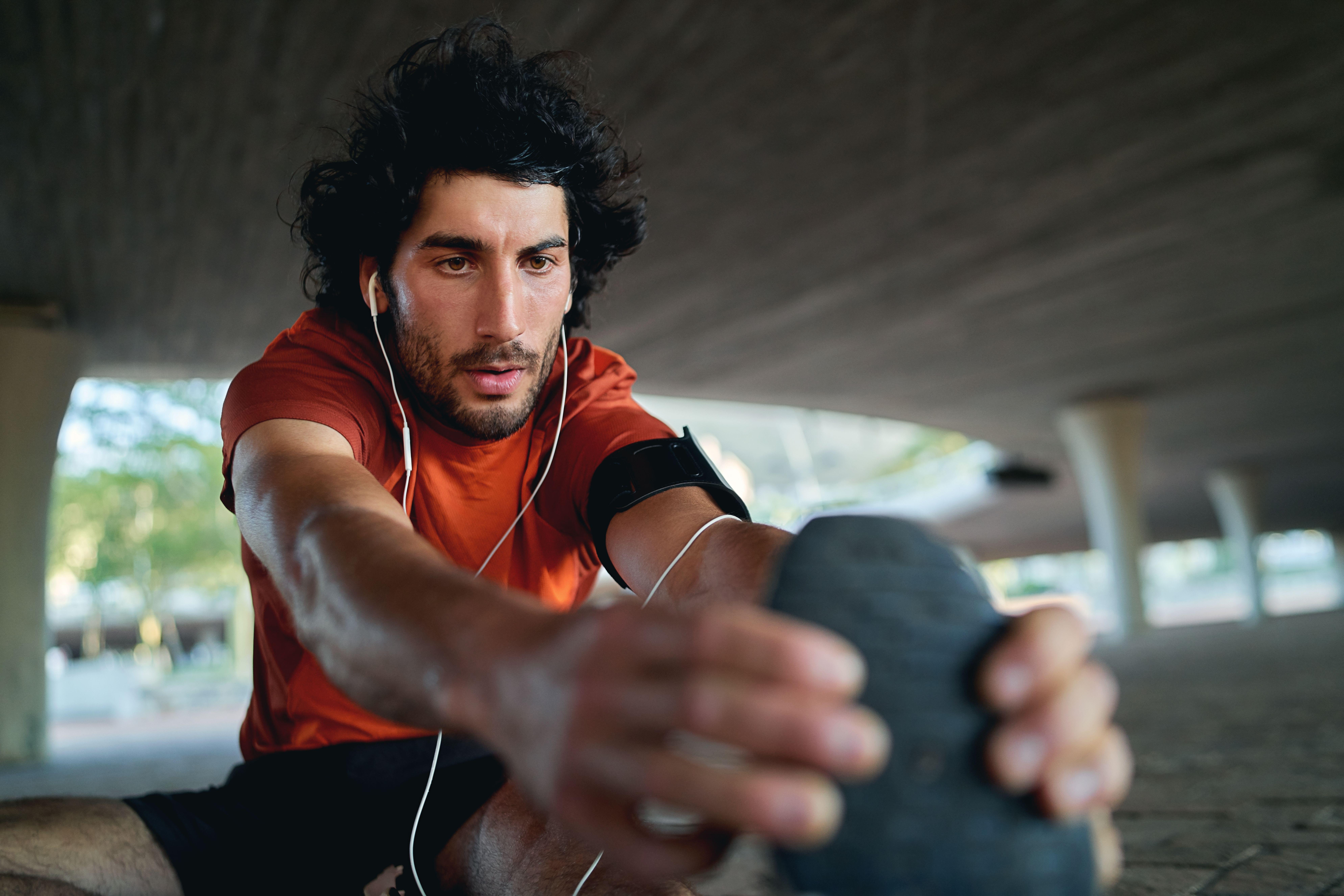Why stretching isn’t the answer to tight muscles – and the exercises to try instead
Trying to stretch your way out of tight muscles and hips isn’t always successful – follow this top trainer’s tips to move more freely, writes Harry Bullmore


If a muscle or joint feels tight, stretching tends to be people’s first port of call. On the face of it, this approach makes sense, but a movement mechanics expert says it might not be the best course of action. And in some cases, it may even be counterproductive.
“It’s a very level one way of thinking; this is a simple problem and I’m going to give it a simple solution,” says Ash Grossmann, founder of The Training Stimulus. “In some cases that can be true – you stretch a tight muscle and you get some relief.
“But in reality, there are many other potential outcomes, and there are indirect reasons why a muscle could be becoming tight. The clue is: if you stretch it and the tightness keeps coming back, then stretching isn’t solving the tightness.”

Below, he explains how you might identify the root of the problem, and shares a simple protocol anyone can try to combat tight hips – arguably the most common problem area.
Why do we feel tightness?
Grossmann says, as far as movement is concerned, the primary function of the nervous system is protecting the body. In other words, if you’re feeling tightness, it’s for a reason. For example, the nervous system could be stopping you from accessing a position it deems dangerous.
“If your nervous system doesn’t feel like you are safe to do an absolute arse to grass squat, it might not let you go there because it doesn’t feel strong, stable or in control [in that position],” Grossmann explains.
But he says there’s another cause of muscle tightness which is frequently overlooked: the nervous system attempting to create stability in an unstable joint.
“If there’s been an injury or you have a sporting history which means your body now only has certain muscles at its disposal to get a job done, it overloads those muscles rather than spreading the workload efficiently around the other muscles of the joint area,” says Grossmann.

Limitations of static stretching
Stretching comes in many different forms. Static stretching, where you hold a muscle in an elongated state for a significant chunk of time, is probably the best known.
“If we’re looking at long, static stretches, we’re generally creating tension and looking for relaxation,” says Grossmann. “You get into a long stretch then breathe and cue the body to relax, allowing you into a greater range of motion. And that can give you some short-term relief to tightness.
“What we’re working on there physiologically is called the golgi tendon organ (GTO). I like to compare this to the bindings in your ski boots; it’s a safety mechanism. When the muscle detects too much tension and it thinks something might tear, it triggers relaxation of the muscle. The muscle will completely switch off because it thinks the tension is too great and it risks structural damage.
“We’re using and abusing that aspect of our physiology when we use long, static stretches to downregulate the muscle contraction and allow us into a greater range of motion.”
This can deliver “incredibly large improvements in range of motion, very quickly”, he says. But people may find their limbs feel loose and unstable when accessing these freshly acquired positions, potentially leading to an increased risk of injury.
Alternatives to static stretching
If you’re looking to increase your usable range of motion around a joint, Grossmann prefers “pulse stretching” to classic static stretches. This simply means stretching a muscle to its end range of motion, allowing it to contract slightly and pull back, then repeating this for multiple repetitions, as seen in the example above.
“The thing that teaches the nervous system that it’s safe to access a large range of motion is the number of times you’ve been there and come back safely,” he explains. “All we’re doing with pulse stretching is getting to that end range, then doing mini reps with the goal of improving it.
“If you do normal strength training, you’re still getting that, but you only get one end-range contraction per rep. Whereas if you do pulse stretching, you might do five or more pulses in the same amount of time.”
While this technique still falls under the stretching umbrella, Grossmann says the physiological processes behind pulse stretching and static stretching are fundamentally different.
Static stretching uses the GTO to trigger relaxation. Pulse stretching uses muscle spindles – stretch receptors which sense a change in the length of a muscle and can consequently trigger it to contract. Grossmann argues this latter approach is better for developing usable range of motion.
“If we think about the outcome we want from stretching, generally we want to feel looser, more mobile and more comfortable in the positions we want to use,” he says. “By using pulse stretching, we get similar benefits to range of motion, but with better muscle activation, strength, coordination and control. It benefits absolutely everybody.
“If you have spent a long day at your desk, and your body is feeling chair-shaped and stuck in that position, doing some pulse stretches is going to counteract that far more effectively than just doing a backbend and deep breathing to get everything to switch off.”

Protocol for tight hips
Movement is highly individualised, and having a one-to-one assessment with an expert would be ideal for diagnosing deeper problems with your hips, Grossmann says. However, there are some things pretty much anyone can do to help remedy tightness in this area, and these are outlined in the three-step process below.
Commit to regular movement
“In terms of broad, generalised advice, we would want to establish what is causing the tightness,” Grossmann says. “The body is always trying to help us and be more efficient in what we ask it to do. If we are sitting behind a computer for eight, 10, 12 or 14 hours per day, in a flexed hip position [knees raised towards the chest], the body thinks that holding that hip flexed is saving us energy and therefore doing us a favour. Tight hip flexors are actually an adaptive change to the way the muscles sit.”
The obvious counter to this is getting up and about at regular intervals. Or, as Grossmann puts it: “When we’re dealing with an adaptation from stillness, movement is the answer, so any movement is better than just being still.
“In this case, we need to try and win the war by spending less time in that position and creating a business case for the body to say, ‘Actually, I don’t want you to hold tight hip flexors because I need to do things other than sit in a chair’.
“But the body is pretty rational, so unless you give it a compelling business case, it won’t buy into it.”
To build this business case, he recommends regular breaks from the desk which take the hip flexors out of this shortened position – standing and walking are perhaps the most obvious examples, but varied movements through all three planes of motion, such as side bends and twisting, will also help the body stay limber.
“Changing your habits and spending less time sitting down will start to shift the nervous system to appreciate that the hip has functions other than just being sat down,” Grossmann adds.

Build strength and stability in and around the hip joint
If stretching isn’t touching the sides in your battle against stiff hips, it could be that your body is tightening the surrounding muscles to create stability in the joint due to other muscles not functioning properly.
“Because we’ve trained the hip to use hip flexion while sitting in a chair so frequently, when we then go to walk, run or exercise at the gym, the first thought the nervous system has is, ‘What muscle can I use to control this hip joint?’,” Grossmann says.
In a properly functioning body, an array of muscles will club together to execute a movement. However, when this isn’t possible due to dysfunction somewhere along the line, the nervous system takes shortcuts via compensatory actions. Our aim is to return to a state where the work is shared effectively, and the best way to do this is to activate and strengthen the other players around the joint.
“In this situation, we want to try to get some load into the other hip muscles, so that could be the glutes, the adductors and the lateral hip or gluteus medius as well, to show the body that the hip can be stable in other ways than just tightening the hip flexor,” says Grossmann.
“That will again build a business case for why the nervous system can let that hip flexor relax. It will only let it relax if it feels like the job that needs to be done is being done by other members of the team. I always like to think of the body as a collection of players who are working towards a common goal. If the glutes are stabilising the hips, the hip flexor can chill out a bit.”
Traditional strength training is one way to achieve this – “Anything that gets length and load through the tissues will help.” Grossmann also points to something he calls the Stimulus Six Lunges, which you can watch above.
“I’m a big fan of lunges. I think they carry over to most people’s day-to-day function better than the majority of traditional gym exercises. The Stimulus Six Lunges involve lunging in six different directions, and this targets all the main musculature of the hip because we’re moving in all three planes of motion in both directions.
“Usually, people will have two or three which they struggle with a lot more than the other three or four. That’s almost an assessment in itself, because you can see that your hips don’t like going sideways or they don’t like rotating very much.
“That relates to muscles as well. If we don’t like doing a side lunge, maybe the adductors are super tight. If we don’t like doing a crossover lunge, maybe the lateral hip or the glute medius is really tight.”
By regularly using the muscles around your hips and accessing a wide variety of relevant positions, you send a clear message to the body that this is something it should get used to, triggering it to adapt accordingly.
“For your average desk worker, if they did the Stimulus Six Lunges every day, their hips are going to feel way, way better,” Grossmann concludes.
“There’s obviously a lot more nuance you could dig into and details on an individual basis, but their hips are going to be exposed to more positions and ranges of motion than even a lot of people who go to the gym all the time.
“A lot of gym rats will just do squats and deadlifts, only moving up and down, not moving sideways or rotating. If you do the Stimulus Six Lunges, you are maintaining your body’s ability to access all the joint motions of the hip.”
Doing this sequence daily is a good way to maintain the movement patterns on show. You can also progress this sequence over time for performance benefits, either by adding weight and reps, or by increasing the range of motion you access.
Use pulse stretching
If you want to increase range of motion in the hip joint and beyond, pulse stretching (as described in detail above) is another string to your bow.
Grossmann says pulse stretching is present at the end range of motion in every rep of a strength training exercise, including the Stimulus Six Lunges. But you can also weave some focussed pulse stretching work for your hips into your weekly routine – such as the exercises above and below – to work the joint through all three planes of motion – sagittal (up, down, forward and backward), frontal (side to side) and transverse (rotational).
Summary
- Take regular breaks from your desk during the work day and expose your body to varied movements across all three planes of motion.
- Use strength training exercises to build strength and stability through a wide range of movements – “Own the range of motion.”
- Use pulse stretching to improve flexibility in a joint without unlocking end ranges of motion before you are able to control and stabilise them fully.
“For tightness, range of motion and flexibility in the body, it is a case of use it or lose it,” Grossmann concludes. “If a position is important to you, access it regularly.”
Read more: I’ve walked 10,000 steps a day for three years – these five surprising benefits are why I started
Join our commenting forum
Join thought-provoking conversations, follow other Independent readers and see their replies
Comments



Bookmark popover
Removed from bookmarks